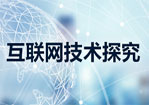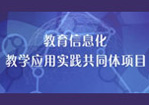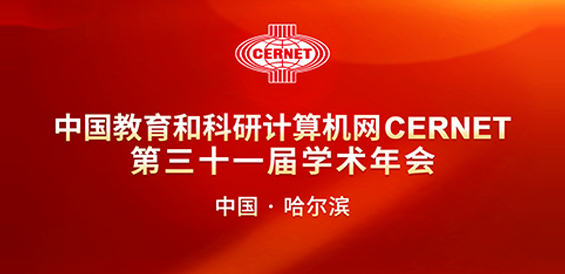Distance Education and the Academic Department: The Change Process
中文译名:远程教育与学院:变化过程
作者简介:

Ric Keaster是教育管理教授,同时也是具备丰富管理经验的实践者,曾在密西西比州立大学、奥本大学、东南路易斯安那大学等多所大学担任教授、院长等职务并曾任美国南部地区教育管理委员会主席,现为西肯塔基州立大学(Western Kentucky University)教育与行为科学学院副院长。
文章简介:
《Distance Education and the Academic Department: The Change Process》发表于最新一期的《EDUCAUSE Quarterly》(2005年第3期),文章从管理者的角度,对在传统学院发展在线教学模式过程中所涉及的管理问题,进行了深刻细致的个案研究。Ric Keaster教授在密西西比州立大学担任教育领导与研究学院院长期间,为实现教学模式的改革进行了深入的研究以及实践探索。文章中将这一过程概括为六个具体步骤,并对每一个步骤都进行了明确阐述。通过论述,Ric Keaster教授揭示了如何将在线教育模式融合于传统学院的教学,并解释了教学管理人员在变革过程中的重要性,强调了一个有计划的、敏感的教学管理人员在发展在线教学模式时的重要作用。
评论:
远程教育作为复杂的教育活动中的一种特殊形式,对教师管理提出了特殊要求。然而在我国目前的远程教育研究队伍中,学者们往往关注技术以及技术所带来的各种效应,比如如何调动学生的学习兴趣、如何构建符合学生认知规律的在线课程以及实施怎样的师生互动。纷繁复杂中,忽略了对教师管理的研究。
从传统的教学模式向在线教学模式的转变,期间涵盖了多种变化,如教学环境的变化,教学评价体系的变化甚至教学观念的变化。管理者如何适应这一转变,应在转变过程中发挥何种作用以及如何发挥,是一个微观的现实问题;必须明确,管理对象是从事远程教育活动的教学一线教师,管理目标是使远程教育技能内化为教师个体的品格,指导自身的远程教学过程,而管理者的管理是在循序渐进中完成的。只有通过管理者的鼓励引导,使作为远程教育实施主体的教师从了解远程教育开始,逐步接受、思考、产生兴趣、热爱以至身体力行,才能保障远程教育的持续良性发展。Ric Keaster教授借用“六个步骤”概括抽象的管理过程,阐明了这一过程中管理者积极鼓励以及引导的方式,体现了缜密的逻辑性以及丰富的管理实践,非常值得远程教育管理者以及研究人员借鉴。
实质上,教师管理既是一个管理者自身管理能力问题,更是一个管理模式问题。有效的教师管理必须依靠科学的管理模式,而远程教育教师管理应当倡导科学的人本管理模式,以激励和实现价值为中心,充分发挥教师参与的热情,强化如协调和交流能力、教师意愿等人本因素,实现学院教学与教师能力的同步发展,这既符合远程教育主体多元化特征,同时也体现了知识经济时代的要求。Ric Keaster教授文中给出了很好的范例,但遗憾的是,文章对如何进行过程监督以及提供持续支持,并没有提供更详细的信息。
尽管如此,这篇文章还是体现了较高的学术价值和较强的现实性。一定意义上说,人本管理模式的构建,其意义已经超越了远程教育。
评论人简介:

乔爱玲,女,汉,东北师范大学教育科学学院04级博士研究生,研究方向为教育技术基本理论、教育信息化以及信息技术教育应用。
通讯地址:长春东北师范大学教育科学学院2004博 130024
e-mail:qiaoal078@nenu.edu.cn
原文:
Distance Education and the Academic Department: The Change Process
Developing online courses in a traditional academic department requires sensitive management of the change process
Ric Keaster
Distance education has been one of the hottest and most controversial topics in higher education circles for approximately the past 10 years. It has been viewed at once as the panacea for educating the world and that which, through its inherent depersonalization of the academic process, will destroy higher education "as we know it."
This article addresses the development and implementation of distance education courses and programs within the context of an average-sized, traditional academic department in a public university in the southern United States. This case study
briefly describes the department;
notes why this department incorporated distance education as a part of its instructional delivery modes;
explains the importance of the department chair in fostering and supporting innovation (that is, change); and
describes what this department went through to get where they are now and why the "process" of change is important.
The Department in Context
The university is located in a city of approximately 50,000. The institution itself enrolls approximately 15,000 students across two campuses. When I was hired as department chair about five years ago, I assumed the leadership of a department possessing the following characteristics:
Sixteen line positions across four programs (Adult Education, Higher Education Administration, P–12 Administration, Research/Statistics)
Skewed distribution of faculty rank and experience (nine full professors with an average of 22 years?experience, mostly at this institution; one associate professor who became full professor within one year; and six assistant professors with less than four years?higher education experience)
Faculty including two ex-chairs (one immediate past chair and his predecessor), the ex-dean of the college, and an internal candidate for chair over whom I was selected
Relatively few policies and procedures in writing due to the culture of tradition in the department and the demographics of its personnel
Traditional approaches by most of the faculty to instruction (little use of technology, no Web-based instruction, no online courses)
Several circumstances within the department, however, suited it for transition over the next few years. The State Department of Education had recently mandated sweeping reform of master抯 degree programs for the preparation of school principals, with much of the change aimed at modes of instruction. As a result, faculty were beginning to broaden their attitudes (and resultant practices) regarding instruction.

特别声明:本站注明稿件来源为其他媒体的文/图等稿件均为转载稿,本站转载出于非商业性的教育和科研之目的,并不意味着赞同其观点或证实其内容的真实性。如转载稿涉及版权等问题,请作者在两周内速来电或来函联系。









 京公网安备 11040202430174号
京公网安备 11040202430174号